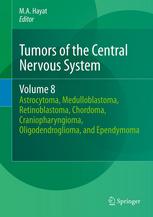

Most ebook files are in PDF format, so you can easily read them using various software such as Foxit Reader or directly on the Google Chrome browser.
Some ebook files are released by publishers in other formats such as .awz, .mobi, .epub, .fb2, etc. You may need to install specific software to read these formats on mobile/PC, such as Calibre.
Please read the tutorial at this link: https://ebookbell.com/faq
We offer FREE conversion to the popular formats you request; however, this may take some time. Therefore, right after payment, please email us, and we will try to provide the service as quickly as possible.
For some exceptional file formats or broken links (if any), please refrain from opening any disputes. Instead, email us first, and we will try to assist within a maximum of 6 hours.
EbookBell Team

4.4
52 reviewsWith tens of thousands of new CNS tumor cases each year in the US alone, this series of publications is a valuable aid to the diagnosis and treatment of these problematic neoplasms. Now, the eighth in the set returns to the topic of brain tumors, dealing with seven distinct types: astrocytoma, medulloblastoma, retinoblastoma, chordoma, craniopharyngioma, oligodendroglioma, and ependymoma. After updating the classification of medulloblastoma the volume provides an overview of ependymoma as well as describing the delineation of prognosis based on the genetic aberrations of the latter patients. The material offers key insights into the molecular pathways involved in tumor biology, such as the role of E-cadherin gene instability, carbonic anhydrase II, urokinase plasminogen activator, and Wnt signaling in meningioma. Contributors explain the genetic and clinical features associated with recurring meningioma, including the role played by erythropoietin receptor, and examine the way in which OTX2 transcription factor functions as an oncogene in medulloblastoma. With much more besides, including discussion of the molecular mechanisms that result in resistance to chemotherapy in medulloblastoma, this volume and its companions have a positive role to play in inspiring a new generation of researchers to design new drugs that are better targeted—and thus more effective.